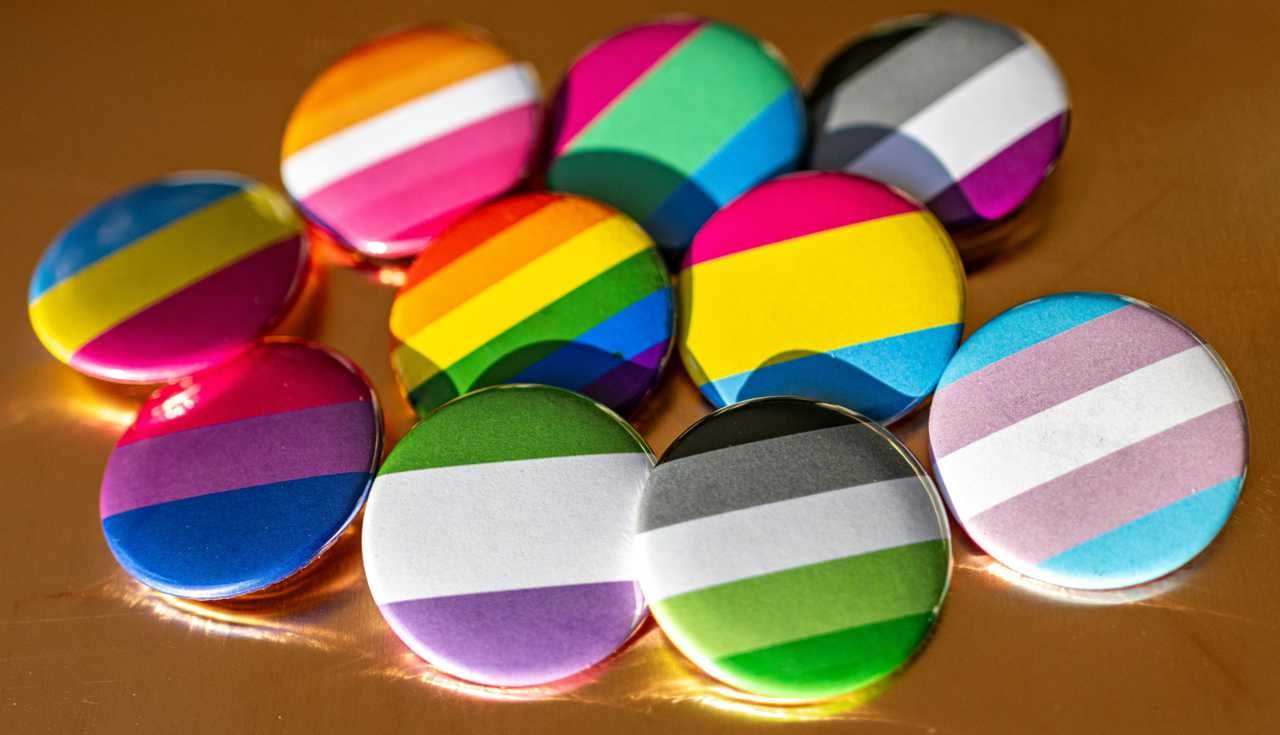
What is LGTB?
Sexual and gender minorities, known by the acronym LGBT or other variants(LGBTQIA+, MOGAI), include lesbian, gay, bisexual, trans, queer, intersex and asexual people. LGBT and inclusive variants.
The LGBT acronym is supplemented with other letters or with a “+” to include other variants of gender identity of sexual character or sexual orientation, such as asexuality, pansexuality, non-binarity or two-spiritedness.
MOGAI stands for Marginalized Orientations, Gender identities and Intersex.
If some of these terms seem obvious and familiar to us – we know what a homo, a bi or a hetero is – others ring in our ears as if we’ve heard them before, but for all that, are we able to give a precise definition?
To help you, we’ve done our homework and come up with a few definitions.
Queer
From the English meaning “strange”, it is also used in English to designate all people with a non-conforming, non-heterosexual sexuality. The term queer took on a new dimension in 1990 with the emergence of the group Queer Nation, whose actions are aimed at improving the visibility of sexual and gender minorities and combating homophobia.
The use of the term queer is thus an assumed political strategy, that of designating oneself by insult (queer as “us you call deviants”) and thus refusing to hide one’s identity in exchange for a form of respectability. Queer is thus associated with radical political struggles, the fight against sexism and anti-racism.
Intersex
Intersex, also known as intersexuality, is defined by the UN as “a way of describing an individual’s biological sex characteristics, including genitalia, gonads, hormone levels and chromosomes” when these characteristics do not correspond to traditional definitions of male or female sex. People corresponding to this definition are called intersex, accounting for around 1.7% of births. Of these births, 1 in 500 involve genital ambiguities or, more commonly, hermaphroditism.
Asexual
Asexuality is the sexual orientation of a person (asexual) who feels little or no sexual attraction to other people. Asexuality has also sometimes been defined as a relative disinterest in sex, or more rarely as an absence of sexual orientation. A widely cited study by Anthony Bogaert, published in 2004, estimates the asexual rate at around 1% in the UK.
Pansexuality
Pansexuality is defined as sexual, emotional, romantic or spiritual attraction to other people regardless of their biological sex, gender expression or sexual orientation. A pansexual person, as is the case with other sexual orientations, may be attracted to a person of any sex or located anywhere on the expression of the gender spectrum including men, women and non-binary people.
Non-Binarity
Non-binarity is a generic term used in the social sciences and in the LGBT+ lexicon to categorize the various non-binary or genderqueer gender identities that don’t fit into a binary norm, i.e. non-binary or genderqueer people identify as neither strictly male nor strictly female, but somewhere in between, a mixture of both, or neither.
Non-binary people may choose to adopt different personal pronouns to refer to themselves, change their first name, adopt a gender expression different from that of their assigned gender at birth. In addition to a possible social transition, some also choose to make a medical transition. Non-binarity is rarely officially recognized; in 2023, 16 countries worldwide recognized a non-binary gender or allowed the mention of “third sex” in their civil status.
Bispirituality
Two-spiritedness is the idea, originating with the native tribes of the Americas, that there are 4 genders. Men, women, men with feminine tendencies and women with masculine tendencies. These categories made it possible to include all human genders and to tolerate all forms of sexuality, including homosexuality.
From these many definitions and human situations, there are common factors that can be summed up in these terms: Acceptance, Tolerance, Diversity.
MARCHE DES FIERTÉS – What is GAY PRIDE?

The Pride march, Lesbian & Gay Pride, LGBTQIA+ Pride or simply Pride is the main event of the LGBT movement, designed to give visibility to homosexual, bisexual, queer, transgender and other people, and to demand freedom and equality of sexual orientation and gender identity.
Created in the wake of the Stonewall riots in the USA in 1969, pride marches now exist in many countries around the world. They are generally organized every year around June, Pride Month.

Indeed, it was on the night of June 27-28, 1969, that a group of lesbian, gay, bisexual and transgender people rebelled against police forces who had come to raid the Stonewall Inn, a New York gay bar located on Christopher Street.
The battle between the riot police and those present raged on for several days.
>The Stonewall riots have since been seen as a major milestone in the struggle for equal rights for heterosexual, bisexual and homosexual, transgender and cisgender people.
A few months later, the country’s main gay associations decided to organize demonstrations to commemorate the riots. In 1972, the first demonstration in Europe took place in Münster, Germany.

Sexual and gender minorities
In France, the first march was organized on June 25, 1977 by the MLF (Women’s Liberation Movement) and the Groupe de Libération Homosexuelle. These marches led to the acquisition of social rights such as marriage for all and adoption, and played a major role in the fight against AIDS, among other things.
In many countries today this march remains forbidden, all the more reason for us to rejoice in being able to freely celebrate love, acceptance and respect, to create a world where everyone can blossom freely and with pride.
For more information on sexual and gender minorities, many articles are available on theENIPSE website.